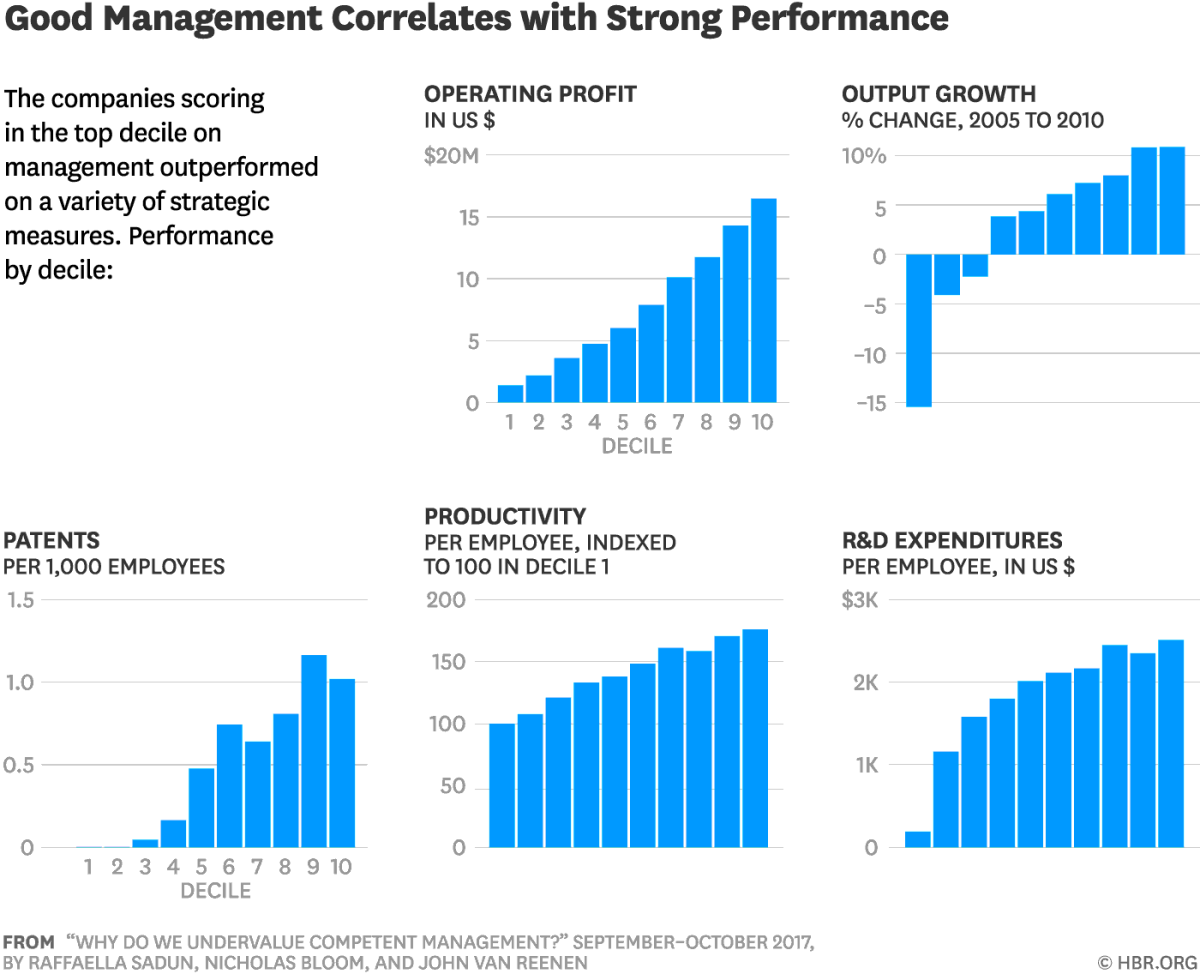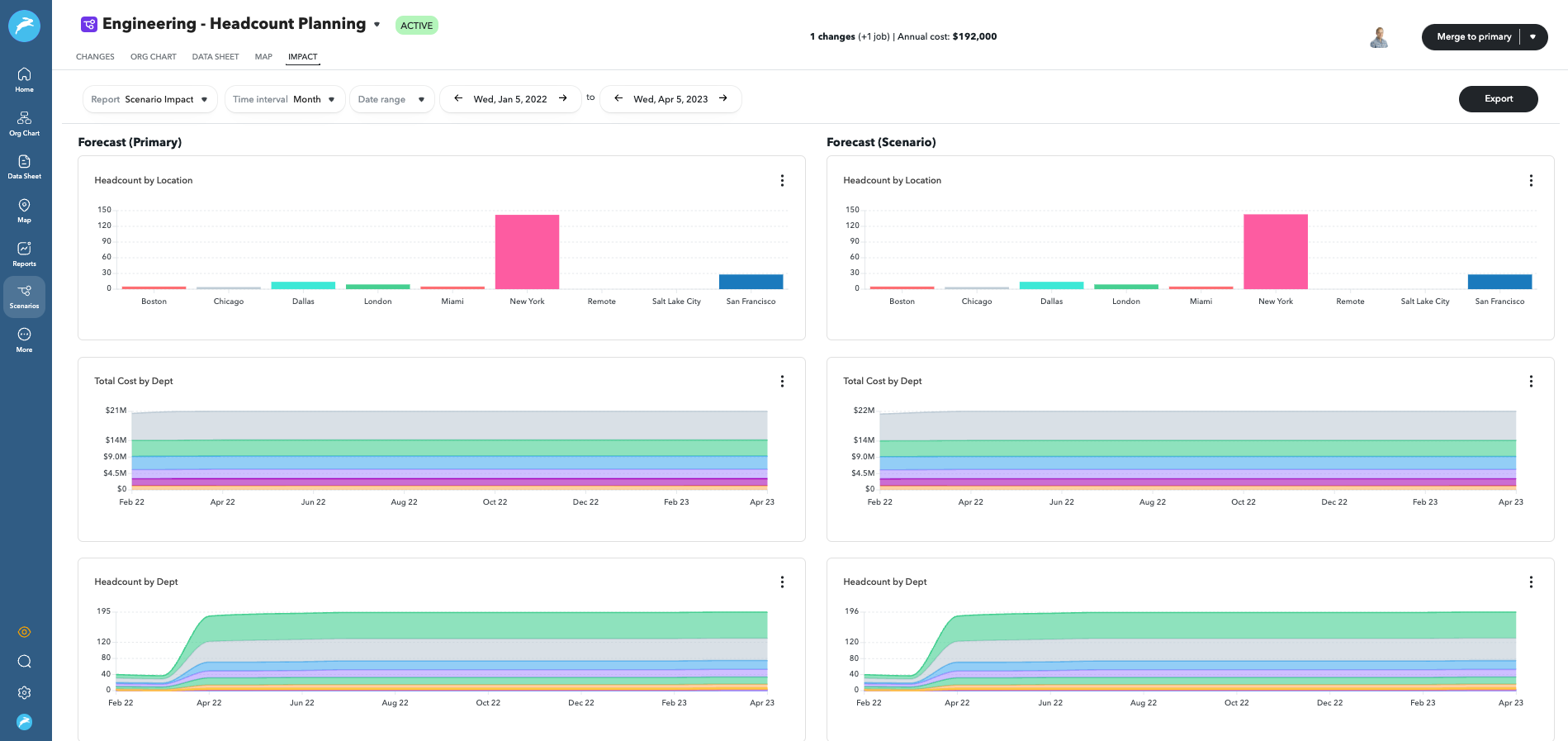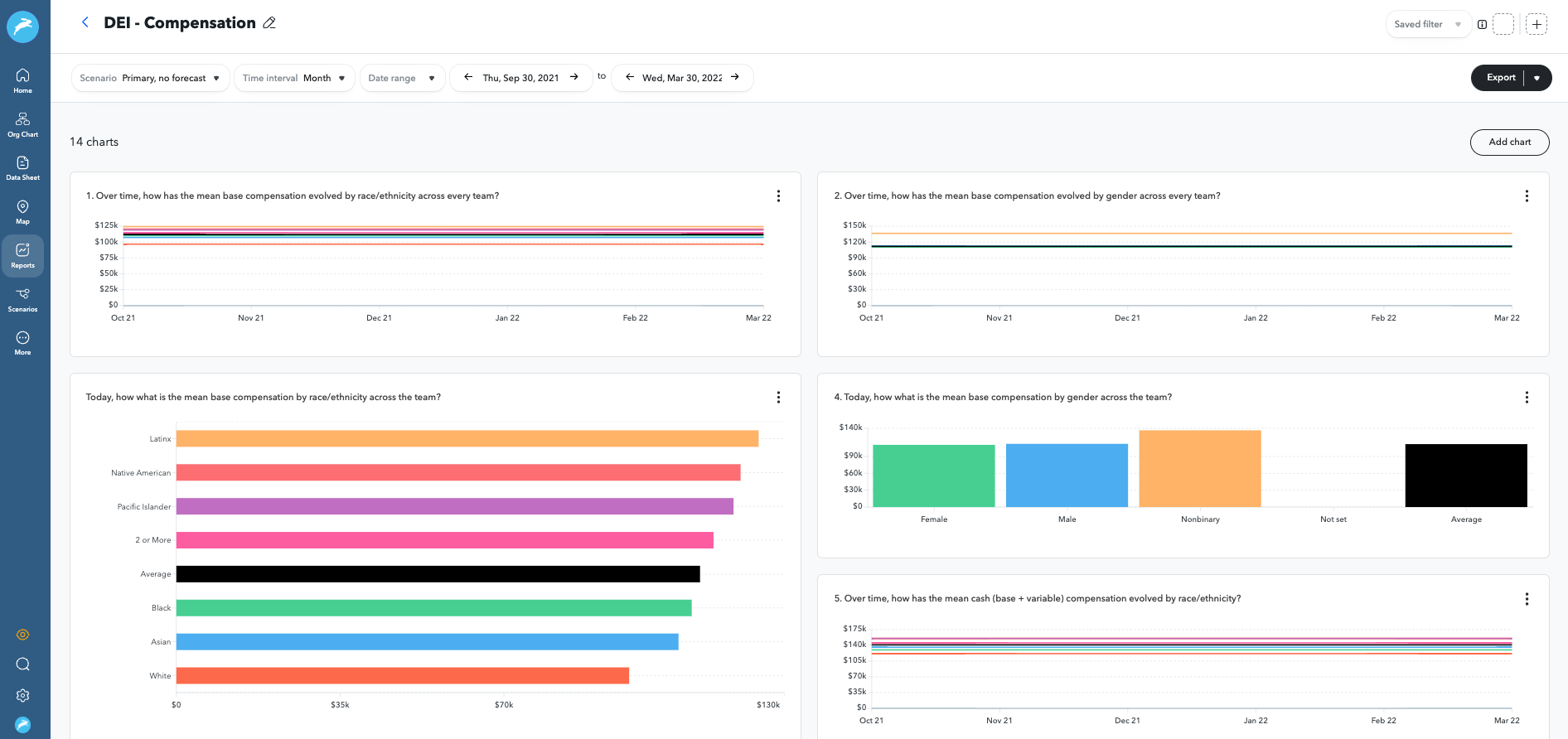Over the past few years, many companies chose to cut middle management out of the decision-making process, claiming decisions are made faster when there’s less people at the table.
But while executives were celebrating their business’ dexterity and speed, a large issue arose: unhealthy company cultures. And this problem, of course, snowballed into the Great Resignation, resulting in companies losing time, money, and resources to find and onboard new hires.
In hindsight, this comes as no surprise. Middle managers are crucial for your company’s operations and culture. In fact, Gallup analyzed a decade worth of data and insights to find that company productivity and team culture hinges largely upon managers.
Therefore, one of your best decisions moving forward is to engage your middle management as strategic partners. You’ll not only invest in their professional well-being, but also tap into layers of knowledge, expertise, and insight that can drive your company forward.
But First, What is Middle Management?
If you’ve read or seen Romeo and Juliet, you remember Friar Laurence, the monk and the go-between among the two title characters. His role is much like that of a middle manager; he has to balance the needs and wants of each party.
Middle managers are, unsurprisingly, in the middle between C-suite and junior-level employees. Amy Lui Abel, managing director at The Conference Board, describes managers as the crucial bridge between executives and employees and one of the reasons companies can scale and thrive. She explains, “Middle management acts as the important link between the C-suite’s goals and strategies and the employees that execute them.”
Because their role is intertwined with both levels of colleagues, managers have to wear many metaphorical hats. However, that constant pressure of switching between the role of a supervisor and the role of a subordinate can take its toll. You don’t need reminding how Shakespeare’s play ends, but you may have forgotten that the death and destruction occurs because of the friar’s mismanagement. While your managers (hopefully) won’t have as drastic of results, the stress from managing different stakeholders and donning different work personas can lead to unhappiness, feelings of unproductivity, and employee churn.
It’s therefore important to support your middle management by giving them what they and your company needs. And that should look like a seat at the table. This will allow further engagement with leadership and give them a voice in company decisions and strategic initiatives.
Middle Managers are Your “Boots on the Ground” Leaders
Executive leadership often lacks the context needed to make specific decisions. It’s not because they choose to, but because it’s nearly impossible for them to supervise and understand the daily tasks of every employee in their company.
Managers, on the other hand, know their teams’ situations and needs intimately, especially if your company employs a continuous and contextual performance management strategy.
Because they are so connected to their people, middle management influences their team’s daily experiences. In other words, managers are in a unique position to reinforce important company initiatives, model expected behaviors, and align team goals to the overall business strategy if they’re given the right insight and support to get there.
The importance of middle management isn’t just anecdotal. Due to relationships built by good managers, many companies report higher employee engagement, increased productivity, better team performance, and higher employee retention. And that makes total sense.
Marcel Schwantes, Founder and Chief Human Officer of Leadership From the Core, argues that people want to work for managers and companies who see them as worthy business partners. His claim is backed by Gallup, which found that “human-centered companies that promote the idea of putting people (employees) ahead of profits actually improve business performance over the long term.”
This people-first strategy also benefits the overall business. According to HBR, companies with strong management rank better for “productivity, profitability, growth, and longevity.” And who doesn’t want a more productive and happier workforce?

Good managers see benefits to both employee and company-wide growth.
In short, your middle managers are your “boots on the ground” leaders and take stock in true employee engagement, company culture, and execution of daily tasks. And because managers can connect with employees, they are better able to further strategic initiatives and help drive change across your organization.
Middle Management Examples for a Strategic Partnership
It’s clear that middle management plays a critical role in your workforce. Now it’s time to initiate or refresh your partnership to further your company’s strategic initiatives. Read below for middle management examples and tips on how to leverage their unique position in your organization.
Engage Middle Management in Headcount Planning
Simply put, managers are more familiar than senior leadership with the strengths and weaknesses of their team. They have also aligned their team’s goals with those of the company and know which roles and skills their department needs to help achieve set expectations. The natural, strategic decision is to engage middle management in headcount planning.
One way to empower managers to make aligned, data-driven decisions is by investing in the right people operations platform. When your leadership and middle management teams have access to the same current data, they’ll be able to make informed and strategic headcount, compensation, and managerial decisions.
For example, let’s say your company wants to introduce a new engineer to the team. Managers can look at the appropriate metrics, such as headcount by department and base compensation by location, to determine if adding a new teammate fits the company budget and hiring goals. They’ll also need insight to the bigger picture, such as your product roadmap, to understand goals that need to be delivered on and whether or not they have the right resources to get there.

In ChartHop, managers can access important data to ensure their headcount plans are aligned to company budget and overall hiring goals.
Use Middle Management to Drive Change
Consider every daily touchpoint a manager has with their team, along with the choices they make within those interactions. When managers are mindful and intentional about creating a team culture of belonging, they become an even bigger asset to your organization.
That’s because leaders who focus on inclusion and belonging not only create an equitable and supportive place to work, but also invest in their people’s professional performance. According to Evan Carr, Senior Research Scientist at Amazon, employees with a strong sense of belonging report a 56% higher level of overall job performance and a 75% decrease in used sick days. Clearly, managers’ interactions with employees have lasting effects.
In these cases, middle management isn’t just meeting with teammates once a quarter, but are instead meeting frequently, providing real-time feedback, and intentionally working to ensure all employees feel welcome. Furthermore, with continuous performance management, your people will benefit from more support, reduced bias sometimes found in performance reviews, and stronger manager-employee relationships. The trust developed in those relationships is essential to driving change across the organization.
It’s therefore crucial to champion your middle management when implementing new initiatives. Buy-in across all levels of a company is necessary—especially with managers– for these initiatives to gain the momentum needed to realize real impact. To help achieve this, clearly communicate your priorities to managers and workshop ways they can help establish these initiatives within their own teams.
DEIB is one such area in which middle management can have significant influence. Although many businesses now prioritize DEIB, half of diverse employees still encounter biased behaviors daily. Unfortunately, because executive leadership is oftentimes so far removed from the issue, “they lack a clear understanding [and] can’t design effective solutions.”
But since managers frequently work hand-in-hand with their team, they have a better sense of company culture and how DEIB initiatives are actually playing out. Through consistent check-ins, they also develop relationships with their people and are in a position to help report issues, manage internal team conflicts, and establish processes to make all employees feel safe.
Managers can also look at data to bring transparency to company decisions. By analyzing DEIB data and the intersectionality across various metrics, leadership of all levels can determine areas of growth, identify potential risks for the company, and develop action steps to address these issues.

Looking at DEIB data in context and in conjunction with other data sets allows leadership to make data-driven decisions that positively impact the organization.
Include Middle Management in Contingency Planning
When the unexpected strikes, employees look to managers for answers and guidance. If you have refreshed your traditional methods for a new, aligned contingency plan model, your managers should have a say in your company’s contingency plans so they’ll already be in the know if and when issues arise.
When creating your aligned business contingency plan, make sure you:
- Ask leadership and department managers to identify internal and external risks for your company.
- Have your teams review the responses and determine the severity and likelihood of each risk.
- Consider how each risk will impact your workforce and company, and establish roles and responsibilities if it does occur.
- Create a contingency planning guide and communicate the plans to your teams via company-wide and department meetings.
By developing a plan that includes input from all levels of management, you ensure your team leads can act quickly and effectively for their department. Additionally, by involving managers from the beginning, you can increase their ownership of each plan and their team’s alignment to company-wide messaging.
Further Enrichment for Middle Management
While middle management influences roughly 80% of the workforce, these managers often only receive 20-30% of their company’s training focus.
To empower middle management as strategic partners, you need to equip them with tools, training, and resources that provide a base level of knowledge and allow them to put their people skills into action.
One hypothetical example is further training, workshopping, and implementation surrounding onboarding new hires. Providing managers with customized support can foster a better understanding of their role in leading these initiatives, equip them with practices they can take to their teams, and give them frameworks for important conversations with their employees. It’s also an opportunity for leadership to clearly communicate expectations for middle management performance and to set corresponding goals.
Another way your executive team can further invest in the management experience is to provide specific talking points for team leads. Management consultant Liz Kislik explains, “It’s unrealistic to assume that managers will naturally communicate even the most crucial topics the way a senior executive might—and, conversely, senior execs may not anticipate the questions a middle manager will be asked by frontline workers.” Therefore, by taking time to prepare your team leads with a communication plan, you instill confidence in their delivery and ensure that the information conveyed across all teams is aligned.
Middle Management = The Next Strategic Step for Your Company
If you already partner with middle management and use their knowledge, skills, and interpersonal skills to your strategic advantage, you’re well on your way to ensuring a successful future for your company. If you haven’t yet enacted this partnership, now’s the time to do so. By collaborating with your managers, you’ll achieve a deeper understanding of your organization’s strengths and weaknesses, and will therefore be able to develop a stronger, strategic plan to scale and navigate what may come.





